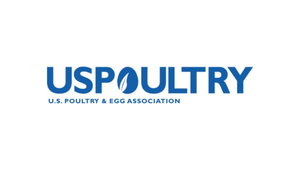Soybean meal feedings and incorporation in rations have gone up.

The U.S. soybean industry is still optimistic that China will uphold its end of the Phase One trade deal this year despite a slight delay due to COVID-19, Jim Sutter, chief executive officer of the U.S. Soybean Export Council, said during a webinar event this week.
While the deal probably won’t be fulfilled this marketing year, he said the group believes it will be “heavily done” in the last half of the 2020 calendar year.
When the Phase One deal was announced, Sutter explained that many thought the purchases were just going to start showing up. However, there were additional actions that needed to be taken before purchases could start occurring.
“Fortunately, those additional steps have been taking place,” he said.
For example, one of the items was a tariff waiver on imports. “Importers in China were able to apply for that, and we understand many importers have been able to take advantage of that and have received those waivers," Sutter said. "So, now they can import U.S. soybeans and not have to pay the tariff.”
The U.S. is ready for the market to start purchasing, Sutter added.
Currently, Brazilian farmers are aggressively selling to China, but the general sentiment in the U.S. soybean industry is that China will shift its purchases to U.S. soybeans sometime between May and August.
“Demand is pretty good there,” he said, adding that China's African swine fever (ASF) situation is improving -- “maybe even improving faster than we would have expected it to be.”
In fact, he said soybean meal feedings and incorporation in rations have gone up.
Further, Sutter said China doesn’t have a lot of stocks to rely on because it has been drawing on those stocks.
“In a pre-COVID world, we were very concerned with African swine fever and the challenges that presented,” ConsiliAgra managing director Emily French said.
Despite this major demand headwind of ASF, she explained that the global soybean meal supply cushion is just more than 16 days.
Based on the U.S. Department of Agriculture’s April “World Agricultural Supply & Demand Estimates” report, French said global soybean meal demand despite ASF, and so far despite COVID-19, is projected to be up 2.7% year over year.
Post-COVID-19, global soybean meal demand will depend on the other countries that export the product and how greatly consumer protein demand is affected by the virus, she said.
Pre-COVID-19, China was the determinant factor for the soy outlook. Post-COVID-19, she said the biggest factor is “the utter collapse of the [Brazilian] real versus the U.S. dollar.”
French added, “In this post-COVID world, we’re really seeing currency drive trade, not only in soybeans but in wheat as well.”
She relayed that the real/U.S. dollar relationship has declined 32% year over year. As such, Brazilian farmers are receiving record prices for this year's and next year’s crop.
“Until there’s a recovery in the real/[U.S. dollar] relationship, it will be the Brazilian farmer selling that will largely dominate and set the tone for world trade,” French said.
About the Author(s)
You May Also Like





